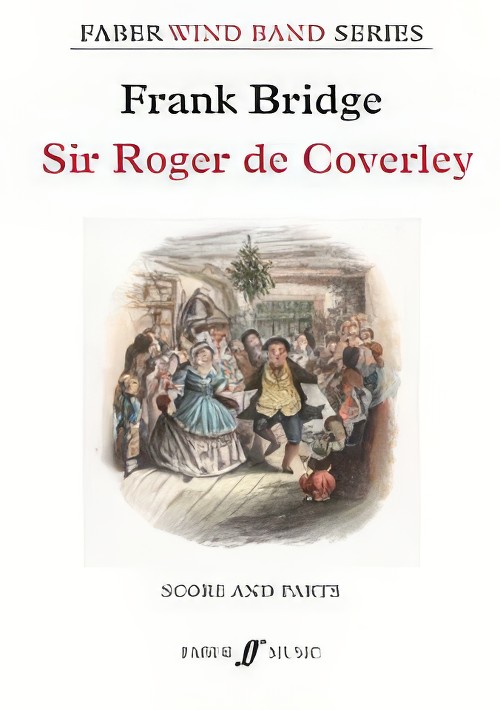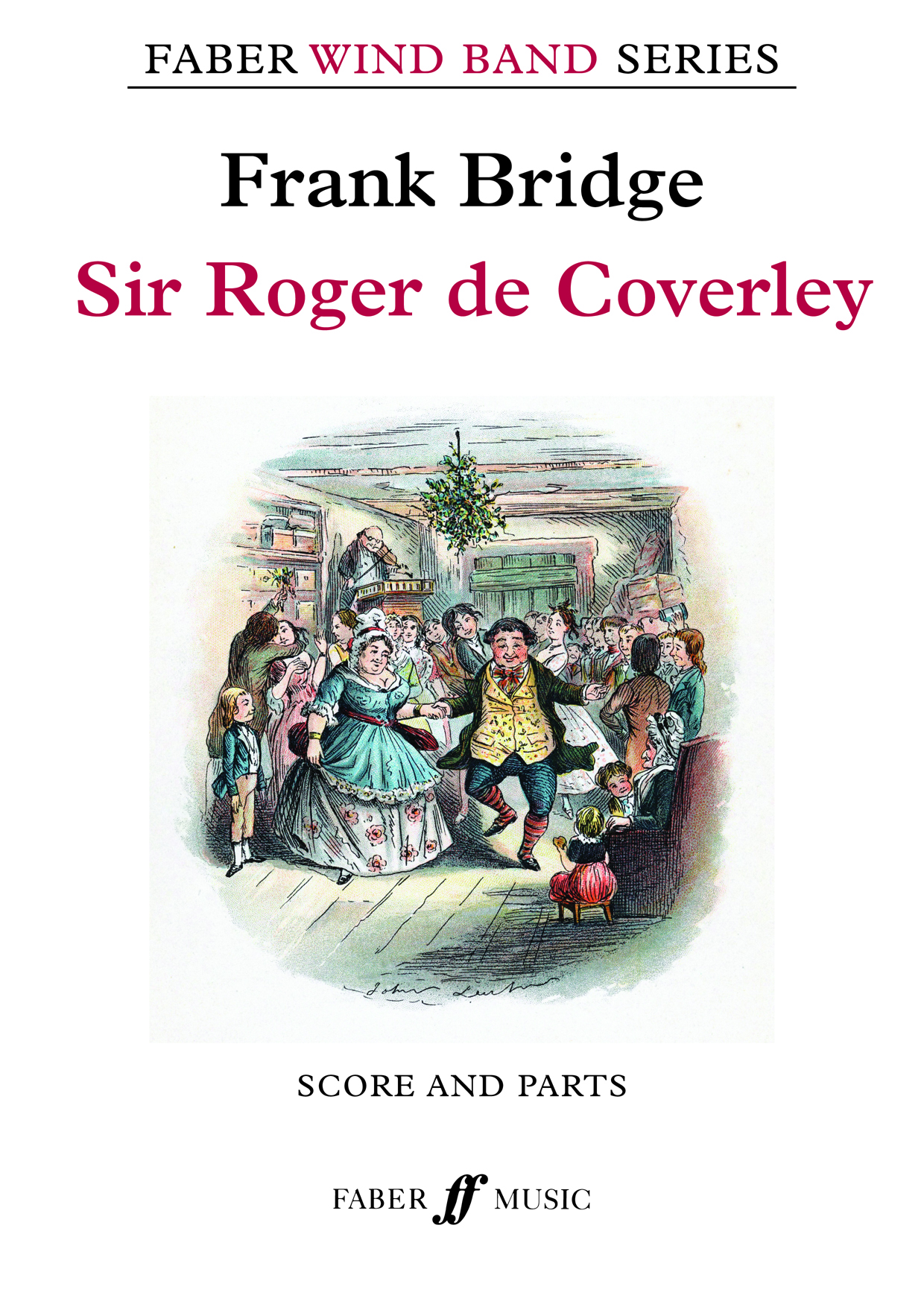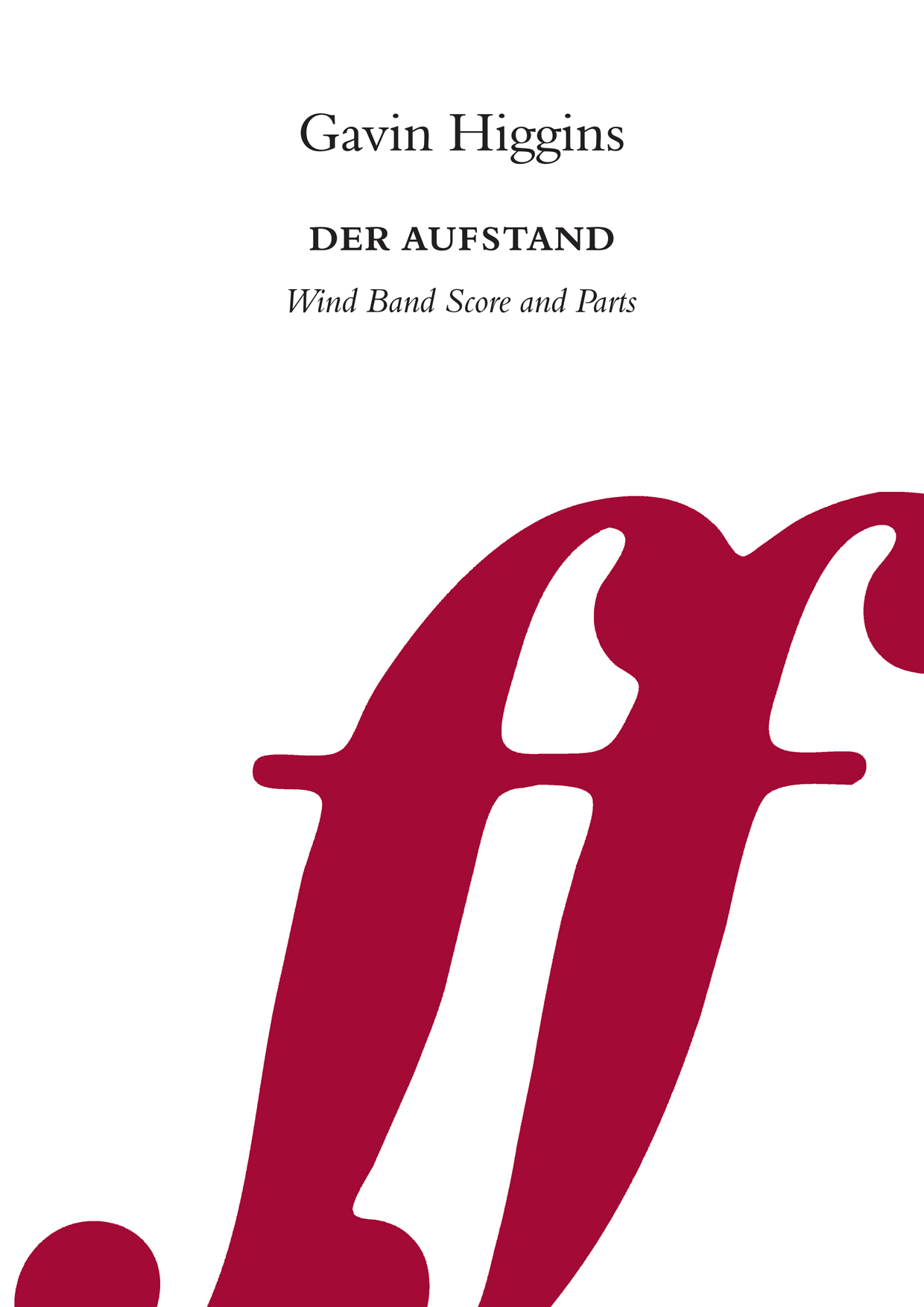Results
-
£85.00
Sir Roger de Coverley - Frank Bridge
Frank Bridge (1879 - 1941) was one of the leading English composers of his time. In October 1922 he adapted his popular string quartet Sir Roger de Coverley for full symphony orchestra and Sir Henry Wood agreed, at the last minute, to include it in the last night of the Queen's Hall Promenade Concerts at the end of that month. This elaborate and colourful orchestral version has never been widely performed, but has now been brilliantly transcribed by Alastair Wheeler to provide a miniature dance poem for grade 5 level concert band. Bridge's lively treatment of one of England's most famous traditional dance melodies will make a fitting end to any concert, with the strains of Auld Lang Syne introduced by Bridge as a nod towards Sir Roger de Coverley's traditional function as the final dance of a Christmas Ball, as it was in Old Mr. Fezziwig's party in Dickens' A Christmas Carol.
In stock: Estimated delivery 1-3 days
-
 £79.99
£79.99Sir Roger de Coverley (Concert Band - Score and Parts) - Bridge, Frank - Wheeler, Alastair
Frank Bridge (1879 - 1941) was one of the leading English composers of his time. In October 1922 he adapted his popular string quartet Sir Roger de Coverley for full symphony orchestra and Sir Henry Wood agreed, at the last minute, to include it in the last night of the Queen's Hall Promenade Concerts at the end of that month. This elaborate and colourful orchestral version has never been widely performed, but has now been brilliantly transcribed by Alastair Wheeler to provide a miniature dance poem for grade 5 level concert band. Bridge's lively treatment of one of England's most famous traditional dance melodies will make a fitting end to any concert, with the strains of Auld Lang Syne introduced by Bridge as a nod towards Sir Roger de Coverley's traditional function as the final dance of a Christmas Ball, as it was in Old Mr. Fezziwig's party in Dickens' A Christmas Carol.
Estimated dispatch 7-14 working days
-
 £85.00
£85.00Sir Roger de Coverley - Frank Bridge
Frank Bridge (1879 - 1941) was one of the leading English composers of his time. In October 1922 he adapted his popular string quartet Sir Roger de Coverley for full symphony orchestra and Sir Henry Wood agreed, at the last minute, to include it in the last night of the Queen's Hall Promenade Concerts at the end of that month.This elaborate and colourful orchestral version has never been widely performed, but has now been brilliantly transcribed by Alastair Wheeler to provide a miniature dance poem for grade 5 level concert band.Bridge's lively treatment of one of England's most famous traditional dance melodies willmake a fitting end to any concert, with the strains of Auld Lang Syne introduced by Bridge as a nod towards Sir Roger de Coverley's traditional function as the final dance of a Christmas Ball, as it was in Old Mr. Fezziwig's party in Dickens' A Christmas Carol.
Estimated dispatch 7-14 working days
-
£69.99
Mondo Glissando - Mike Hannickel
Slip-slidin' trombone smears in this rip-snortin' ragtime setting are sure to tickle your ears and put some tap in your toes. The trombone glissando is the happiest sound around! Dedicated to, and premiered by, the Westchester Middle School Band of Westchester, Illinois, Mr. Jason Kluge, director, MONDO GLISSANDO targets that most critical of wind sections. When was the last time you featured your trombones? When was the last time they felt like STARS? Section feature pieces are one of the most important techniques available for keeping a section strong and well represented. MONDO GLISSANDO can even be used as a trombone SOLO piece, by having the non-solo trombones play from thetechnically simpler euphonium part.Either way, section or solo, there's nothing like an exposed part on an upcoming performance to reinvigorate a musician's interest and encourage that all-important PRACTICE!
Estimated dispatch 7-14 working days
-
£124.95
Sinfonietta - Score and Parts - Rob Wiffin
Program NotesSinfonietta is a challenging, extended work for symphonic wind band. It is in three movements: Dance with the Devil, A Glimpse of Paradise and Reyes Magos. The first two movements are a transition from dark to light; Dance with the Devil is aggressive and occasionally macabre whereas A Glimpse of Paradise is serene. The first and final parts of the second movement were originally written for a sequence in the Royal Military Tattoo 2000, played under the John Magee poem High Flight – ‘Oh I have slipped the surly bonds of Earth...Put out my hand, and touched the face of God’ - with videos of eagle owls in flight dramatically projected onto the buildings of Horse Guards in Whitehall, London.The last movement, Reyes Magos, is the joyous fiesta of the Three Kings. I wrote Sinfonietta while living in Spain and there January 6th, rather than Christmas Day, is the main day of present-giving, marking the Epiphany, the arrival of the Kings from the Orient at the Nativity.Sinfonietta is technically and expressively demanding but is written within the realms of tonal language.
Estimated dispatch 7-14 working days
-
£24.95
Sinfonietta - Score only - Rob Wiffin
Program NotesSinfonietta is a challenging, extended work for symphonic wind band. It is in three movements: Dance with the Devil, A Glimpse of Paradise and Reyes Magos. The first two movements are a transition from dark to light; Dance with the Devil is aggressive and occasionally macabre whereas A Glimpse of Paradise is serene. The first and final parts of the second movement were originally written for a sequence in the Royal Military Tattoo 2000, played under the John Magee poem High Flight – ‘Oh I have slipped the surly bonds of Earth...Put out my hand, and touched the face of God’ - with videos of eagle owls in flight dramatically projected onto the buildings of Horse Guards in Whitehall, London.The last movement, Reyes Magos, is the joyous fiesta of the Three Kings. I wrote Sinfonietta while living in Spain and there January 6th, rather than Christmas Day, is the main day of present-giving, marking the Epiphany, the arrival of the Kings from the Orient at the Nativity.Sinfonietta is technically and expressively demanding but is written within the realms of tonal language.
Estimated dispatch 7-14 working days
-
£74.95
Sonata for Clarinet No.2 in Eb - Score and Parts - Johannes Brahms
This clarinet sonata was composed in 1894 for clarinetist Richard Mu?hlfeld. This was an interesting time in Brahms' life as he vowed he would retire from composing in 1890 but after he heard a performance of the Weber clarinet concerto No.1 and the Mozart clarinet quintet he so admired the soloist that he felt he should come out of retirement and compose 2 clarinet sonatas for him. These were completed in 1894 and first performed in a private concert in September of that year. These 2 sonatas were the last chamber pieces he composed before his death.
Estimated dispatch 7-14 working days
-
£14.95
Sonata for Clarinet No.2 in Eb - Score only - Johannes Brahms
This clarinet sonata was composed in 1894 for clarinetist Richard Mu?hlfeld. This was an interesting time in Brahms' life as he vowed he would retire from composing in 1890 but after he heard a performance of the Weber clarinet concerto No.1 and the Mozart clarinet quintet he so admired the soloist that he felt he should come out of retirement and compose 2 clarinet sonatas for him. These were completed in 1894 and first performed in a private concert in September of that year. These 2 sonatas were the last chamber pieces he composed before his death.
Estimated dispatch 7-14 working days
-
£75.00
Der Aufstand - Gavin Higgins
Der Aufstand (German for 'riot') is not a descriptive work, nor is it solely based on the riots of 2011. It does, however, draw on the idea of opposing forces and escalating anger. The work falls into two contrasting sections that are linked by a series of repeated, 'screaming' chords. A slow build drives the first section from a single pitch to a blazing orchestral tutti. The second section is a fast and wild series of fanfares and driving rhythms that ultimately cannot be sustained. In many ways this mirrors the first. Both sections open on single tones (Bb and E) and grow to a climax of brass and hammered chords. The first performance took place on the last day of the 2012 Olympic Games. Der Aufstand is a noisy antithesis to the celebratory fanfare.Wind Band Grade: 6 (Professional and elite student and 'national' bands)Duration: 10 minutes
In stock: Estimated delivery 1-3 days
-
£142.00
Diversity (CB) - Yves Wuyts
Diversity is written for the royal fanfare band 'De Werkmanszonen' from Zichen-Bolder (Riemst) where Yves has been a conductor since 2005 and is dedicated to their chairman Sylvain Tans. The title 'Diversity' refers to the diversity of styles in the work but also to the diversity of a chairman. The work consists of three continuous movements. Part one starts with a fanfare motif that is later developed in a pop/rock and funky style. The second theme has a medieval character with a twist of the first theme. In the second movement we hear several lyrical solos. After the cadenza, the medieval theme returns but now in a more mysterious character. After this we come to the climax of this movement, which fades out into the third movement. The last movement has a resolute character where several previous motives and the opening theme are repeated to end with a dazzling finale!
Estimated dispatch 7-14 working days


